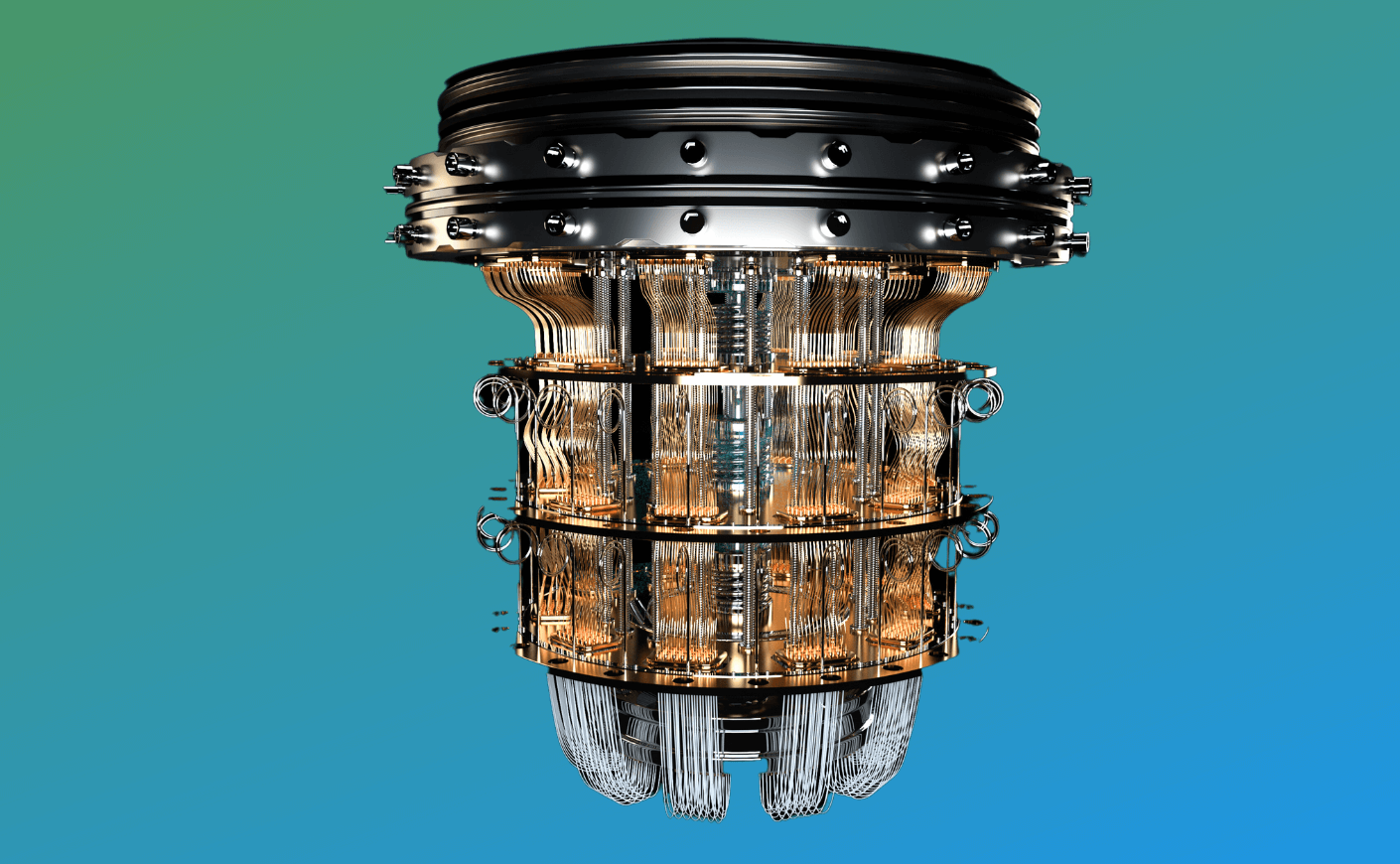In the latest season of the sci-fi series Black Mirror, there’s a scene in which actor Annie Murphy grips an ax in front of what looks like a shimmering, multi-tiered chandelier. She winds back, prepared to smash the “quamputer,” a device which has made her life a living hell. But as she’s about to connect with it, a woman begs her to stop. “This is a quantum computer,” she pleads. “We barely know how it works. It’s basically magic.”
That more or less captures the public sentiment toward these machines. We’re told that thanks to something known literally as “quantum weirdness,” scientists at IBM, Microsoft, Google, and other industry titans have developed computers vastly more powerful than your MacBook. They’re so superior, in fact, that they’re capable of performing tasks millions of times faster than supercomputers. Experts promise that they’ll revolutionize medicine, optimize A.I., and Microsoft insists they’ll “forever alter our economic, industrial, academic, and societal landscape.” If that’s not magic, it sounds pretty close.
But what is quantum computing anyway, and how does it work? In short: It’s complicated. Here’s a simple-ish explanation and a look at the field’s potential.
What is a quantum computer?
So-called classical computers, like the one either sitting on your desk or perched on your lap, operate using bits. Each bit can hold one of two values, either a 1 or a 0. The iPhone has billions of these bits, collections of which are used to encode a word, or an image, like Keyboard Cat.
Quantum computers, on the other hand, use quantum bits or “qubits.” Now, the qubit is a concept that’s notoriously difficult to break down in plain language. Often, publications resort to explaining that the qubit can “exist as both a 1 and a 0 simultaneously.” It can behave in this strange way because at the atomic and subatomic levels, the laws of physics are different. This “allows quantum computers to make many calculations in one pass, while traditional ones have to perform each calculation separately,” per the New York Times.
According to Scott Aaronson, Ph.D., a professor of computer science at the University of Texas-Austin and a leading quantum computing expert, this is a gross oversimplification and isn’t even quite right. But unless you have a solid grasp of linear algebra, a more precise definition — one involving imaginary numbers and amplitudes — won’t make much sense. (If you do, however, you may want to check out Dr. Aaronson’s piece in Quanta, aptly titled “What Makes Quantum Computing So Hard to Explain?”, or for an illustrated version, his comic.)
Anyway, it doesn’t take many qubits to create a computer that outpaces a classical machine. Here’s why: a smartphone may have something like 16 billion bits of memory, but a mere 53 qubits (the size of Google’s Sycamore quantum processor) would be like harnessing some 9 quadrillion bits. Now do you get what all the hype’s about?
What quantum computers can — and can’t — do
There’s one ultra-powerful and potentially dangerous way a quantum computer could be put to work: as a codebreaker to crack into encrypted info that’s stored online. Currently, our computers and internet data — like the credit card you probably have linked to your Amazon account — are protected by encryption. But a quantum computer would theoretically be able to break through this encryption rather easily, rendering the protocols that safeguard practically all digital transactions useless. IBM in a report this year, even called the tech an “existential risk” to traditional cybersecurity methods.
That’s why governments, particularly China and the U.S., view quantum computing as an issue of national security, and have become heavily invested in the field. China has spent $400 million on a quantum lab, the NYT reports, and in 2018, the Trump administration vowed to spend $1.2 billion on quantum research.
Its other primary use would be “simulating quantum mechanics itself,” Dr. Aaronson says. “It could help across all sorts of problems in materials science, pharmaceuticals design, building high-temperature superconductors, anything where you need to simulate nature at the quantum scale,” he says.
In an interview with The Guardian, the popular theoretical physicist Michio Kaku goes much further, claiming that “quantum computers should [be able to] unravel the secrets of life, secrets of the universe, the secrets of matter, because the language of nature is the quantum principle.” Of course, even Dr. Kaku concedes this is still pretty far off, requiring a machine far more sophisticated than the ones we have now.
Currently, IBM’s Osprey, which has 433 qubits, is the world’s most advanced quantum computer. A workable device, one that could compete with your laptop in solving certain kinds of problems, would need at least 1,000 qubits, experts estimate, which is why some physicists believe we’ll never be able to build one. That’s because these machines are extremely hard to develop; they rely on teeny-tiny particles, often run at temps close to absolute zero, and their calculations are still quite unreliable.
But we’re certainly getting closer: IBM recently announced a breakthrough which it believes may make quantum computers less error-prone, propelling the field forward into an “era of utility,” as an IBM exec recently told the NYT. And in the quantum arms race, other scientists are continuing to make some huge strides, if not yet that quantum leap.









